Media | Articles
9 of the world’s greatest engine designers
Not all automotive engine designers get the credit they deserve, but occasionally their names carry as much weight as the storied badges on the vehicle’s trunk lid or hood. In no particular order, here’s our pick of legends behind some of the greatest engines of all time.
Tadek Marek

Aston Martin is as English as leather on willow and irresponsible drinking, so it’s fitting that its first straight-six was designed by W.O. Bentley (yes, that Bentley). However, the engines that followed were designed by Pole Tadeusz “Tadek” Marek. Marek studied in Berlin and worked first for Fiat and GM before moving to Britain in 1940 and eventually joining Aston in 1954.
Marek designed the straight-six in the 1950s DBR2 racer and redesigned the earlier W.O. straight-six for service in the DB4—an all-alloy twin-cam straight-six displacing 3.7 liters—originally with a punchy-for-the-period 240 hp, but with as much as 314-hp in the twin-plug DB4 GT Zagato raced by Clark and Moss. Smooth, characterful, and powerful, a good 3.7 still feels potent today.
Marek’s 5.3-liter V-8 arrived in 1969 in the DBS V8 and squeaked into the new millennium in the nose of the twin-supercharged 600-hp Vantage V600, good for a claimed 200 mph.
Paul Rosche
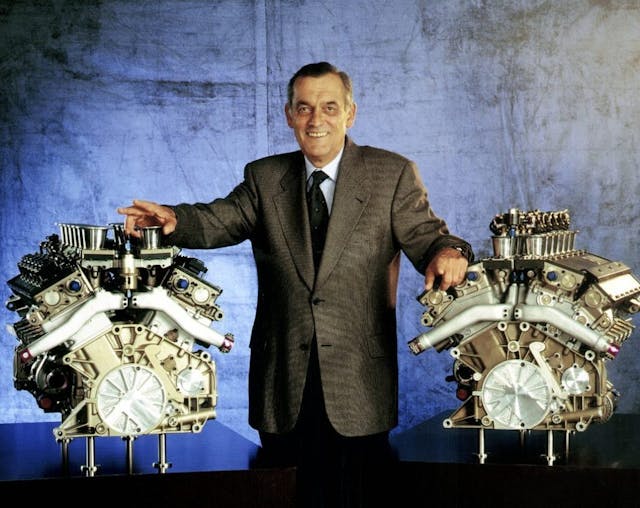
If one thing’s better than an E36-chassis BMW M3 engine, it’s two E36 M3 engines. Paul Rosche developed both the original 3.0-liter straight-six in the M3, and a V-12 built to similar principles (though radically different with an aluminum block and lightweight magnesium cam covers). Making 610 hp at 7400 rpm, the S70/2 is one of the greatest engines of all time and was fitted to one of the greatest supercars ever built: Gordon Murray’s McLaren F1.
Marketplace
Buy and sell classics with confidence
Born and bred in Munich, Rosche joined BMW in 1957 straight from college, working under Alex von Falkenhausen in BMW’s engine development department. He went on to work on BMW’s four-cylinder M10 engine that first appeared in 1961; once turbocharged, comprehensively re-engineered, and named M12, that powerplant ran as much as 1500 hp in the back of the Brabham BT52 designed by, yep, Gordon Murray. No F1 engine has ever been more powerful.
Rosche worked for BMW for 42 years, retired in 1999 after signing off on the brilliant E46 M3, and died in 2016 at the age of 82.
Hans Mezger
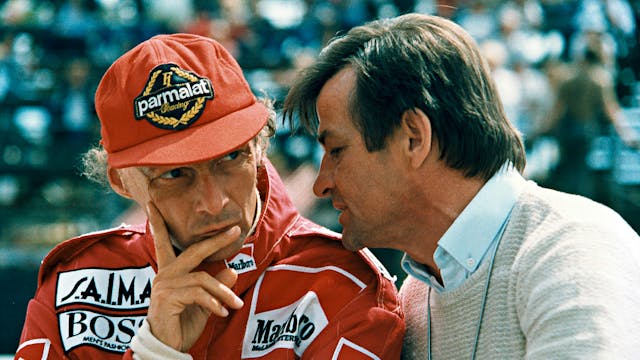
The name Hans Mezger is almost as synonymous with Porsche as “air-cooled” and “flat-six.” Yet Mezger has more strings to his bow than “only” bringing us the engine in the back of the 911. When he first bagged his dream job in Stuttgart in 1956, it was to work on the diesel engines he didn’t even realize Porsche was fitting to tractors. That led to work on the four-cam flat-four Type 547 engine in the 550 Spyder, and Porsche’s first F1 project in 1960, before he got the 911 gig. It was the start of an association that lasted well into the water-cooled era with GT cars and wrapped up with the incendiary 997-chassis GT3 RS 4.0.
Mezger also developed the entire 917—not just its mighty flat-12—that won Porsche its first two Le Mans. He and mastered other configurations too, most notably the 1.5-liter turbo V-6 that powered Lauda and Prost to F1 world championships in the back of a McLaren.
Loyal to Porsche to the end, Hans Mezger passed away aged 90 in June of 2020.
Bill Blydenstein
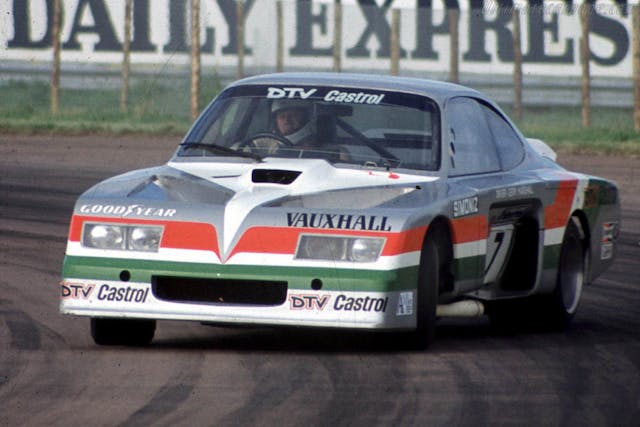
Blydenstein initially trained as an aeronautical engineer and was a handy racer too, but his name earned real currency when he developed race and rally cars for Dealer Team Vauxhall in the 1970s. “Baby Bertha” was a Firenza-based saloon with a 500-hp Holden V-8 in which Gerry Marshall won the ’75 and ’76 Super Saloon championships, and even the 2.3-liter slant-four in the roadgoing Firenza HP was blessed with Blydenstein magic. A Chevette HSR prepped by Blydenstein also took Pentti Airikkala to the 1979 British Rally Championship.
When the Dealer Team Vauxhall days were over, Blydenstein turned his hand to tuning road cars, working from a workshop on a farm in Buntingford and renowned for his expertise with hot cams and gas-flowed heads.
Fitting a Blydenstein cylinder head to your Vauxhall unleashed as much street cred as performance, and the name still resonates with boy racers of a certain age.
Gioacchino Colombo

Born in 1903, Gioacchino Colombo was taught how to tell his cams from his cranks by Vittorio Jano during an apprenticeship at Alfa Romeo, but the Italian (you didn’t know?) is most fêted for his work at Ferrari. In fact, Colombo’s 1.5-liter V-12 engine is the keystone of Ferrari—it was developed in the aftermath of WWI to Formula 1 regulations and fitted to Enzo Ferrari’s first ever car, the 125 S of 1947, producing 116 hp at 6800 rpm.
In various guises, 60-degree V-12 Colombo engines powered Ferraris right through to 1988, most famously in the 250 GTO as a 3.0-liter SOHC V-12 with 296 hp. The Colombo engine’s last gasp came with the 412i grand tourer of 1986, but the man himself had actually clocked off in 1950, first to return to Alfa and, later, to Bugatti and MV Augusta.
It’s ironic—and, perhaps, a sign of how small the world of engine design is—that just as Colombo was effectively ousted by Lampredi after his V-12 had performed poorly in F1, Lampredi was ultimately replaced by Jano, the man who’d taught Colombo so much.
Aurelio Lampredi

If Ferrari’s Colombo V-12s were typically smaller and bred for European racing, those created by Aurelio Lampredi were bigger-chested units associated with cars conceived for America—like the 4.1-liter motor in the 340 America and thumping 5.0-liter in the 410 Superamerica.
Ironically, for a man famed for big motors, Tuscan native Lampredi started his career at scooter-maker Piaggio. He quickly progressed to aero engines and joined Ferrari in 1946, working alongside Colombo and later replacing him while still in his early 30s.
His engines weren’t only for cruising U.S. highways; in fact, the Lampredi V-12 was originally designed for Grand Prix racing. British manufacturer Ascari clinched fifth at Spa on the engine’s debut in 1950, and Lampredi power also won the 1951 Mille Miglia and the 1954 Le Mans 24 Hours. Neither was Lampredi a one-trick prancing horse: his twin-cam fours powered Ferrari’s F1 and F2 racers, plus Maranello’s sports cars.
He quit Ferrari to join Fiat in 1955, following Ferrari’s acquisition of the Lancia F1 team and with it, the famed engine designer Vittorio Jano.
Wolf Zimmermann
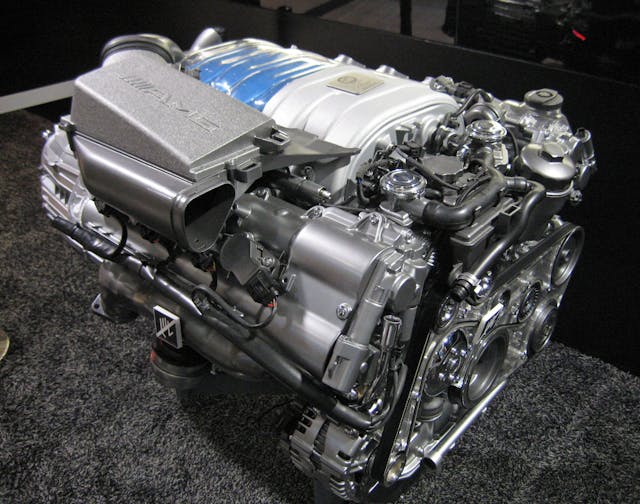
If the old 6.2-liter naturally aspirated V-8 in AMGs including the C63 and SLS Black Series were personified, it’d probably look a lot like Wolf Zimmermann, who’s equal parts Lemmy from Motörhead and Javier Bardem in No Country For Old Men. He also just happens to be the engineer behind AMG’s first in-house, hand-built engine. Raucous, powerful, and very rock ’n’ roll, the M156 engine is a fitting legacy for a man who’s now left the Affalterbach building.
Zimmermann was lured from AMG for Dany Bahar’s unsuccessful years at Lotus and was busy masterminding an all-new V-8 for the reborn Esprit (with a little help from HWA, so the rumor goes, which ran the Mercedes DTM team) before Bahar was fired.
Zimmermann now works in Ferrari’s F1 engine department; as of March of 2023, he’s leading the project to develop 2026’s power unit. If anyone can produce an engine to overthrow the might of Mercedes and Red Bull, it could well be one of their (former) own.
Mike Costin and Keith Duckworth
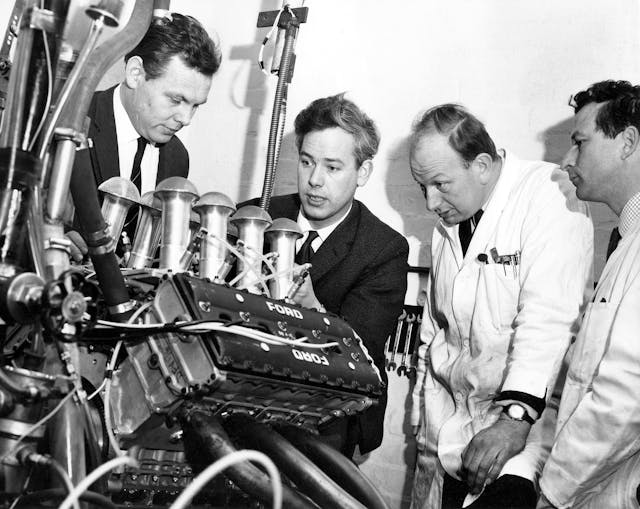
Choosing either Mike Costin or Keith Duckworth as the brains behind Cosworth would be like saying that either Lennon or McCartney was more important to the Beatles. The pair founded Cosworth Engineering Limited in 1959 after leaving Lotus and quickly struck gold with a Formula Junior engine based on a Ford road-car lump.
The Ford association continued for decades, and for enthusiasts the Cosworth name and the engines the pair produced are synonymous with the Blue Oval.
Three in particular have been crucial to Cosworth’s success: the DFV, a 3.0-liter V-8 that debuted in 1967 and became the most successful F1 engine of all time; the BDA 2.0-liter four that powered a generation of rear-wheel-drive Escort rally cars; and the 1980s and ’90s YB engine that slotted in all Sierra Cosworth and Escort Cosworths. The last was, in essence. just a humble 2.0-liter Pinto with a trick twin-cam 16V cylinder head and turbocharger, but it dominated Group A touring car racing and could make over 500 hp in the McDonald’s parking lot.
With so many to choose from, these aren’t the only legends in the field of engine design. Share your suggestions for some of the greats in the comments below.
***
Check out the Hagerty Media homepage so you don’t miss a single story, or better yet, bookmark it. To get our best stories delivered right to your inbox, subscribe to our newsletters.








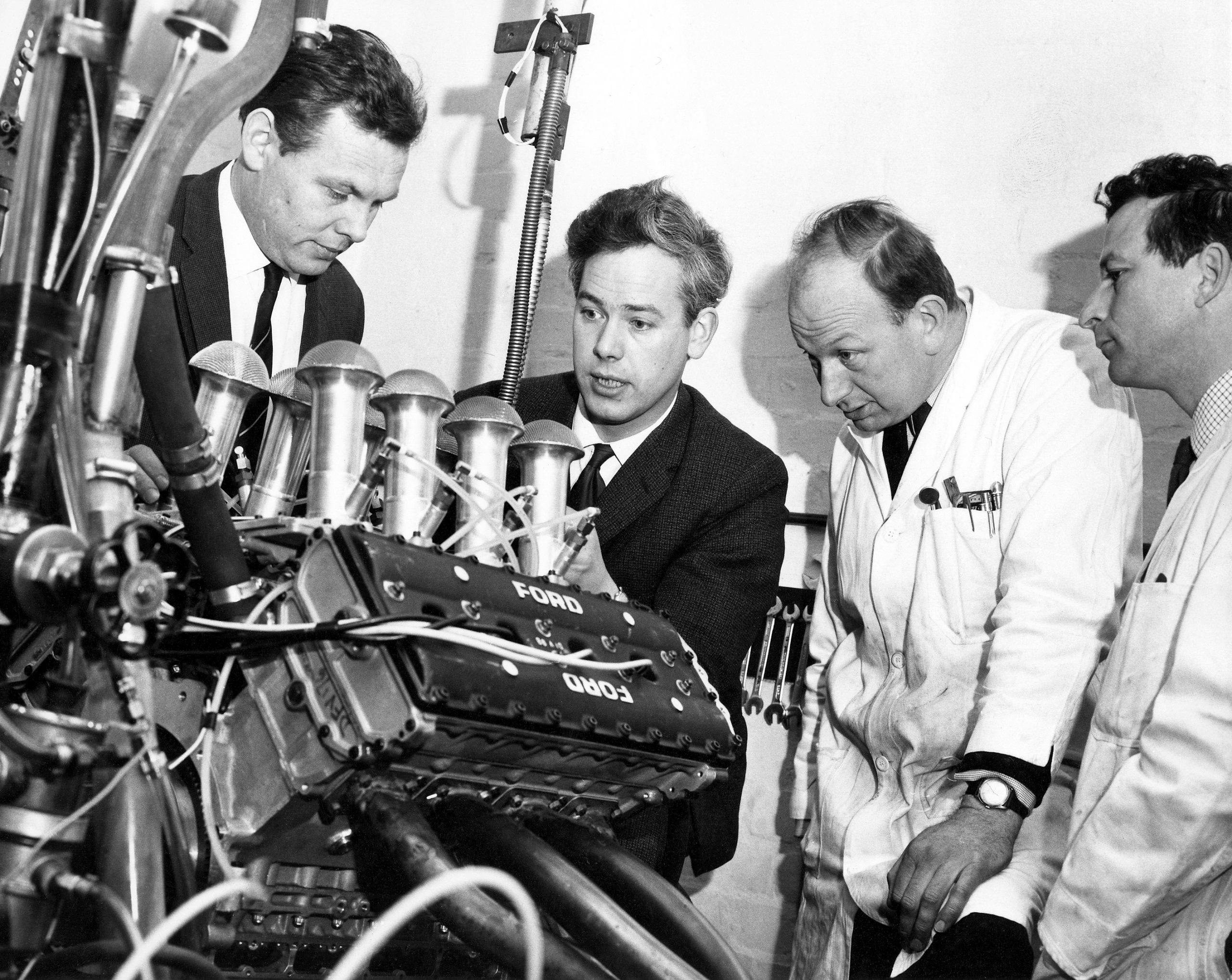
No Zora Duntov?
Blasphemy
Or Joe Turlay?
His engine design was also in production for over 50 years on multiple continents. It has been used in production AND stock car to indy car racing. Jeeps and Rovers to Vette stomping turbo coupes, economy cars to mid-Luxury game-changing quality cars. With arguably superior reliability to any Cadillac designed V8, the ubiquitous work horse for GM that should have been standard in every FWD car.
I don’t think Duntov was the man behind the engine as much as the car. He was not primary in the development of the Chevy small block V8 and really came to be the father of the car as a whole.
No Tom Hoover?
The father of the 426 Hemi?
Now THIS is blasphemy.
I’ve come to the conclusion Haggerty has a very low opinion of American cars and their designers. I’m sure if you went to a car show everyone would recognise they Hemi. Few would the other engines mentioned.
agreed
Just because it’s American doesn’t mean it’s any better than a European, or Japanese engine for that matter. The only reason that Americans would recognise the Hemi in America is because it was widely used in every day cars and drag strips etc. whereas the engines mentioned by Hagerty were used and raced world wide.
Agreed!
The article was originally published by Hagerty UK. I suspect it’s not as much as a low opinion as it is a lack of familiarity.
As an American, I only know a little here and there about overseas designers (The exception being Porsche!) and if I were tasked with writing an article I would have to write what I know.
Right on!
The hemi concept was developed in the early 1920s and was winning races all over the world then, especially at the Indy 500 as a 4 cyl. Chrysler engineers, primarily Tom, garnered expertise developing a 24 cylinder hemi aircraft engine that did not fly until just after WWII in a P-39. That expertise showed up in Chrysler cars in the early ’50s, making both Ford and GM race programs and production cars look foolish for years.
I was thinking Willem Weertman. Involved in the Slant 6, LA V8, B V8, Magnum V6, V8, and V10, the Aussie Hemi 6 and the 2.2 four cylinder.
He engineered Chrysler engines for 40 years!
“Gioacchino Colombo’s 1.5-liter V-12 engine is the keystone of Ferrari—it was developed in the aftermath of WWI…” Whaaat? I think you meant “in the aftermath of WWII”.
The article mentions Vittorio Jano a couple of times, but fails to give him a section of his own, which seems like an oversight.
Well, you could go either way with the V-12. Ferrari asked Colombo to build the engine in 1937, after seeing an engine he produced earlier for Alfetta. WWII got in the way, of course, and the V-12 didn’t actually appear until 1947.
NO Felix Wankle?
Blasphemy also
Kenichi Yamamoto?
Agreed. Rotary motors may not be as commercially viable as these others, but developing a whole new concept of engine that isn’t just more/bigger pistons should be worthy of merit on this list.
No, Tom Hoover?
No, Malcolm McKellar?
Oops…
This list looks silly without Vittorio Jano.
Well, I think Ed Cole, who designed the small-block Chevy engine, deserves some mention, as what he started in 1955 is still being flung around virtually everywhere.
https://www.hagerty.com/media/automotive-history/chevy-small-block-the-little-engine-that-did/
In America, yes.
Actually, Ken, no. Worldwide. The Corvette has played in every major sportscar market globally. And what about power for the Iso Rivolta/Grifo? British drag racing? Australian saloon racing? Swedish hot rodding?
Duesenberg brothers!
I think Duesenberg Brothers used Lycoming engines and blowers.
No.
The cars you may be thinking of were the Cord 810s/812s, built by the same company but entirely different model.
No Don Sullivan or Mose Nowland either? Henry would not approve…
So, the engineers that developed the small block Chevy engine that is still used by hot rodders and in production cars for longer than any above was not even considered?
To go with that, the new small block LS series we’ll be talking about when it’s been around for 60 years too.
I don’t want to hear any moaning about toasters and mix masters.
Great list. Still, it could use an expansion to assuage the other commenters’ grievences. And please include Giuseppe Busso for his magically melodic Alfa V6 design.
+1 for Busso. The V6 was his best, but he also designed the twin cam 4 cylinder that powers most Alfa’s still driven in the US.
On Lampredi, Piaggio was an aeronautical firm that made scooters only after the war. Piaggio Aero, split off in 1966, still makes airplanes.
Harry Miller is another name worthy of the article…
I get it, “9 of the…”, not “The 9 best”, and I suspect that a list of 15 or 20 would’ve exceeded the time or space allotted.
Not mentioningHarry Miller is just poor research. He was the father of an engine design that won the Indy 500 more times in various configurations, but always the basic Harry Miller design was there. Offenhauser, Myer Drake were all derivitives of the Miller design.
Came here to say this. If you haven’t see the Miller exhibit at the Brumos Collection, you should. Serious history lesson on the impact and innovation of Miller Engines – specifically Harry Miller
Kettering?? Ohv V-8
God, there are so many. But I would put Leo Goosens up near the top.